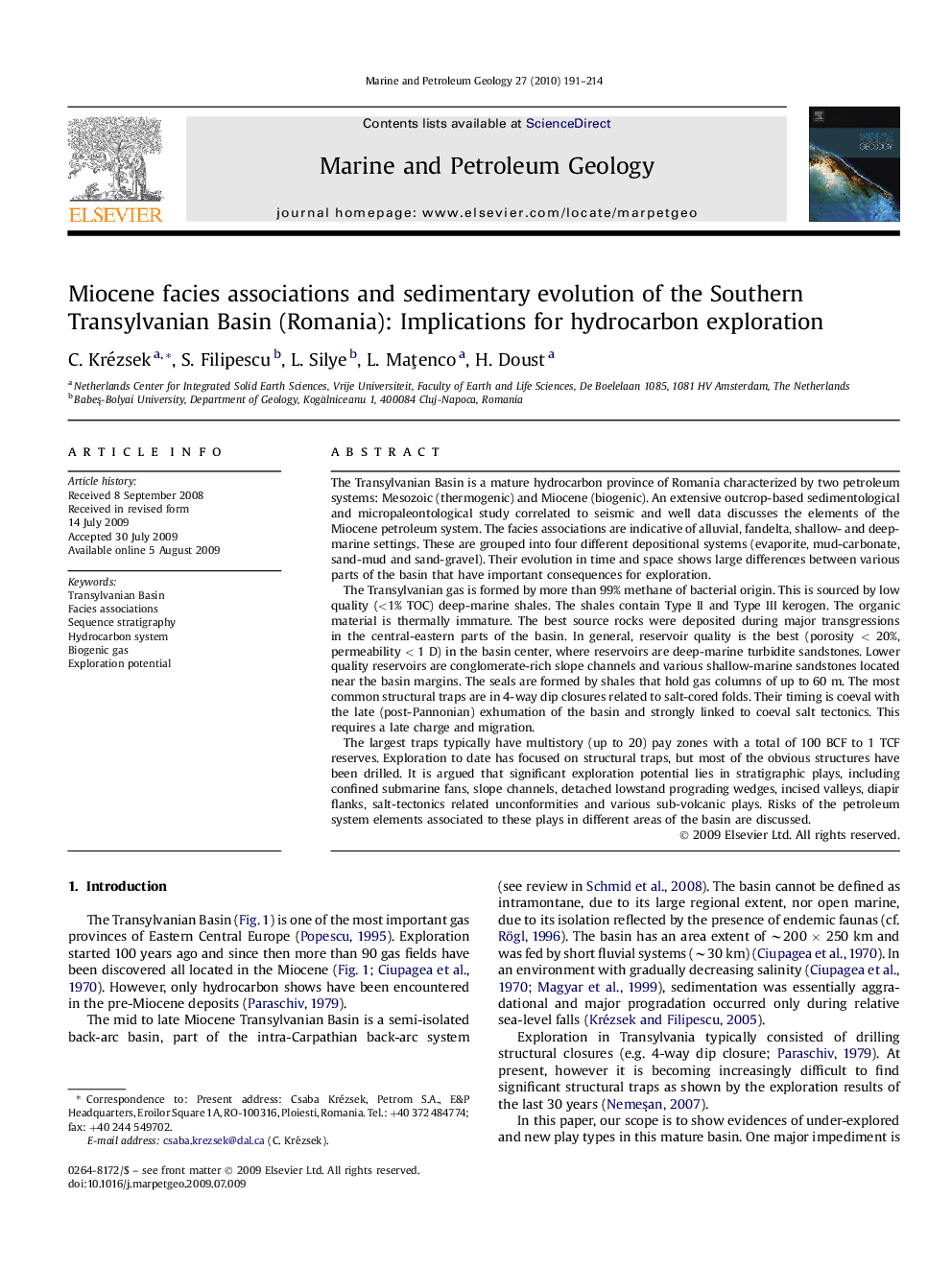| Article ID | Journal | Published Year | Pages | File Type |
|---|---|---|---|---|
| 4696248 | Marine and Petroleum Geology | 2010 | 24 Pages |
The Transylvanian Basin is a mature hydrocarbon province of Romania characterized by two petroleum systems: Mesozoic (thermogenic) and Miocene (biogenic). An extensive outcrop-based sedimentological and micropaleontological study correlated to seismic and well data discusses the elements of the Miocene petroleum system. The facies associations are indicative of alluvial, fandelta, shallow- and deep-marine settings. These are grouped into four different depositional systems (evaporite, mud-carbonate, sand-mud and sand-gravel). Their evolution in time and space shows large differences between various parts of the basin that have important consequences for exploration.The Transylvanian gas is formed by more than 99% methane of bacterial origin. This is sourced by low quality (<1% TOC) deep-marine shales. The shales contain Type II and Type III kerogen. The organic material is thermally immature. The best source rocks were deposited during major transgressions in the central-eastern parts of the basin. In general, reservoir quality is the best (porosity < 20%, permeability < 1 D) in the basin center, where reservoirs are deep-marine turbidite sandstones. Lower quality reservoirs are conglomerate-rich slope channels and various shallow-marine sandstones located near the basin margins. The seals are formed by shales that hold gas columns of up to 60 m. The most common structural traps are in 4-way dip closures related to salt-cored folds. Their timing is coeval with the late (post-Pannonian) exhumation of the basin and strongly linked to coeval salt tectonics. This requires a late charge and migration.The largest traps typically have multistory (up to 20) pay zones with a total of 100 BCF to 1 TCF reserves. Exploration to date has focused on structural traps, but most of the obvious structures have been drilled. It is argued that significant exploration potential lies in stratigraphic plays, including confined submarine fans, slope channels, detached lowstand prograding wedges, incised valleys, diapir flanks, salt-tectonics related unconformities and various sub-volcanic plays. Risks of the petroleum system elements associated to these plays in different areas of the basin are discussed.
